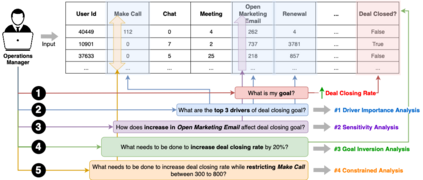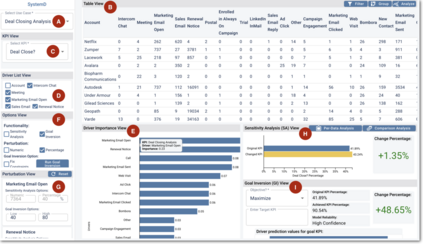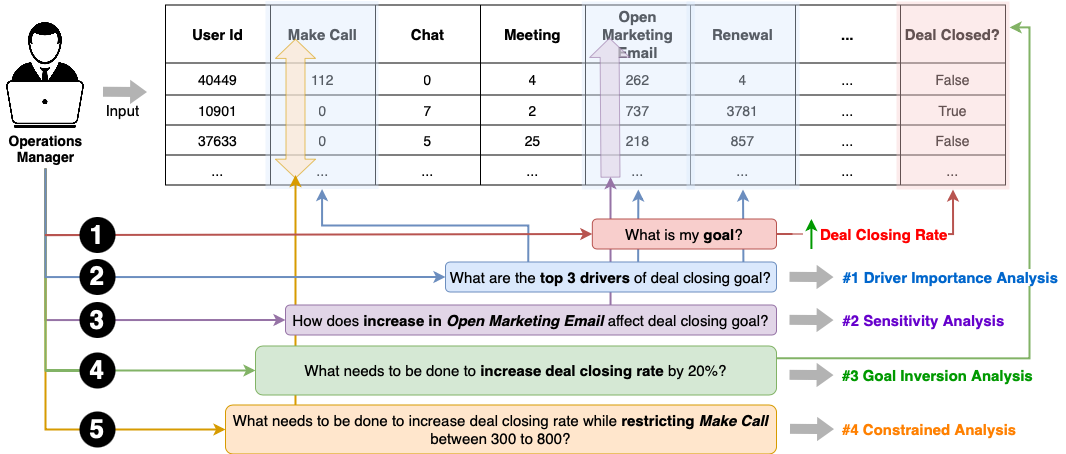The fundamental goal of business data analysis is to improve business decisions using data. Business users such as sales, marketing, product, or operations managers often make decisions to achieve key performance indicator (KPI) goals such as increasing customer retention, decreasing cost, and increasing sales. To discover the relationship between data attributes hypothesized to be drivers and those corresponding to KPIs of interest, business users currently need to perform lengthy exploratory analyses, considering multitudes of combinations and scenarios, slicing, dicing, and transforming the data accordingly. For example, analyzing customer retention across quarters of the year or suggesting optimal media channels across strata of customers. However, the increasing complexity of datasets combined with the cognitive limitations of humans makes it challenging to carry over multiple hypotheses, even for simple datasets. Therefore mentally performing such analyses is hard. Existing commercial tools either provide partial solutions whose effectiveness remains unclear or fail to cater to business users. Here we argue for four functionalities that we believe are necessary to enable business users to interactively learn and reason about the relationships (functions) between sets of data attributes, facilitating data-driven decision making. We implement these functionalities in SystemD, an interactive visual analysis system enabling business users to experiment with the data by asking what-if questions. We evaluate the system through three business use cases: marketing mix modeling analysis, customer retention analysis, and deal closing analysis, and report on feedback from multiple business users. Overall, business users find SystemD intuitive and useful for quick testing and validation of their hypotheses around interested KPI as well as in making effective and fast data-driven decisions.
翻译:商业数据分析的根本目标是利用数据改进商业决策; 商业用户,如销售、营销、产品或业务经理,往往会作出决定,以实现关键业绩指标(KPI)目标,如增加客户保留率、降低成本和增加销售量。 要发现数据属性(假定是驱动器)和与KPI相对应的数据属性之间的关系,商业用户目前需要进行冗长的探索分析,考虑到多种组合和假设情况、筛选、裁剪和相应转换数据。例如,分析全年季度客户留用情况,或建议各阶层客户的最佳媒体渠道。然而,数据集日益复杂,加上人的认知局限性,使得难以跨越多种假设,甚至简单的数据集。因此,进行这种分析是困难的。 现有的商业工具要么提供部分解决方案,其有效性仍然不明确,或者无法满足商业用户的需要。 我们在这里提出需要四个功能,使商业用户能够对各套数据属性之间的关系(功能)进行互动式学习和理性,便利数据驱动决策。 我们在系统D中执行这些功能,通过互动式直观分析,在用户中进行互动式分析,我们通过对客户进行互动式数据分析,通过用户进行快速的测试,来评估。








